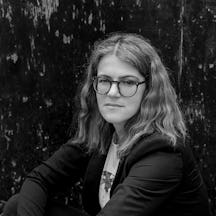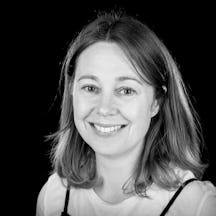Seventy per cent of the world might be covered by water, but 100 per cent of it is covered by air. It envelops us. There’s no escape. What’s more, this air we too easily dismiss as ‘thin’ moves around the planet, picking up new notes to add to its complex chemical soup as it goes. Air travels over continents, moving in and out of human lives, in and out of human bodies, over our roads, through our industry, our buildings. Air sees us at our best and worst, spots secrets we keep even from ourselves. And sometimes, as Alice Bell highlights, it keeps receipts.
Tracking down the mysteries of ancient air is part of the job of paleoclimatology, the study of the history of the Earth’s climate. Generally, paleoclimatologists work via ‘proxies’ – indirect archives, like the shifting sizes of rings on a tree trunk, which can provide clues as to how much rain there’s been year to year, or might bear scars of forest fires.
Perhaps the most poetic aspects of their research, however, can be found in ice cores, cylinders of ice mined from glaciers. Snow falls. More snow falls on top of it, and the weight of each subsequent snow presses down to form solid ice. If they drill deep enough, paleoclimatologists can unearth ice that dates back not just decades, but over a million years.
This ancient ice carries with it chemical markers from the clouds that the snow was formed in. It captures soot, pollen, algae, salt and, most excitingly of all, bubbles of air: actual samples of past atmospheres.
The birth of the climate crisis
Artist Wayne Binitie has worked with ice-core scientists at the British Antarctic Survey for several years, part of his PhD at the Royal College of Art. To mark the UN climate talks in Glasgow in November 2022, he developed an exhibition for the Science Centre there, based around an ice core with bubbles of air from 1765 trapped inside it.
Liberated from the polar regions it formed in, the core was purposely placed to melt over the course of the talks. Binitie captured the sound of this melting and projected it to the gallery at large, a haunting drip-drip-drip of time slipping away, along with pops and fizzes as those precious bubbles of centuries-old air pop and release themselves into the wider city.
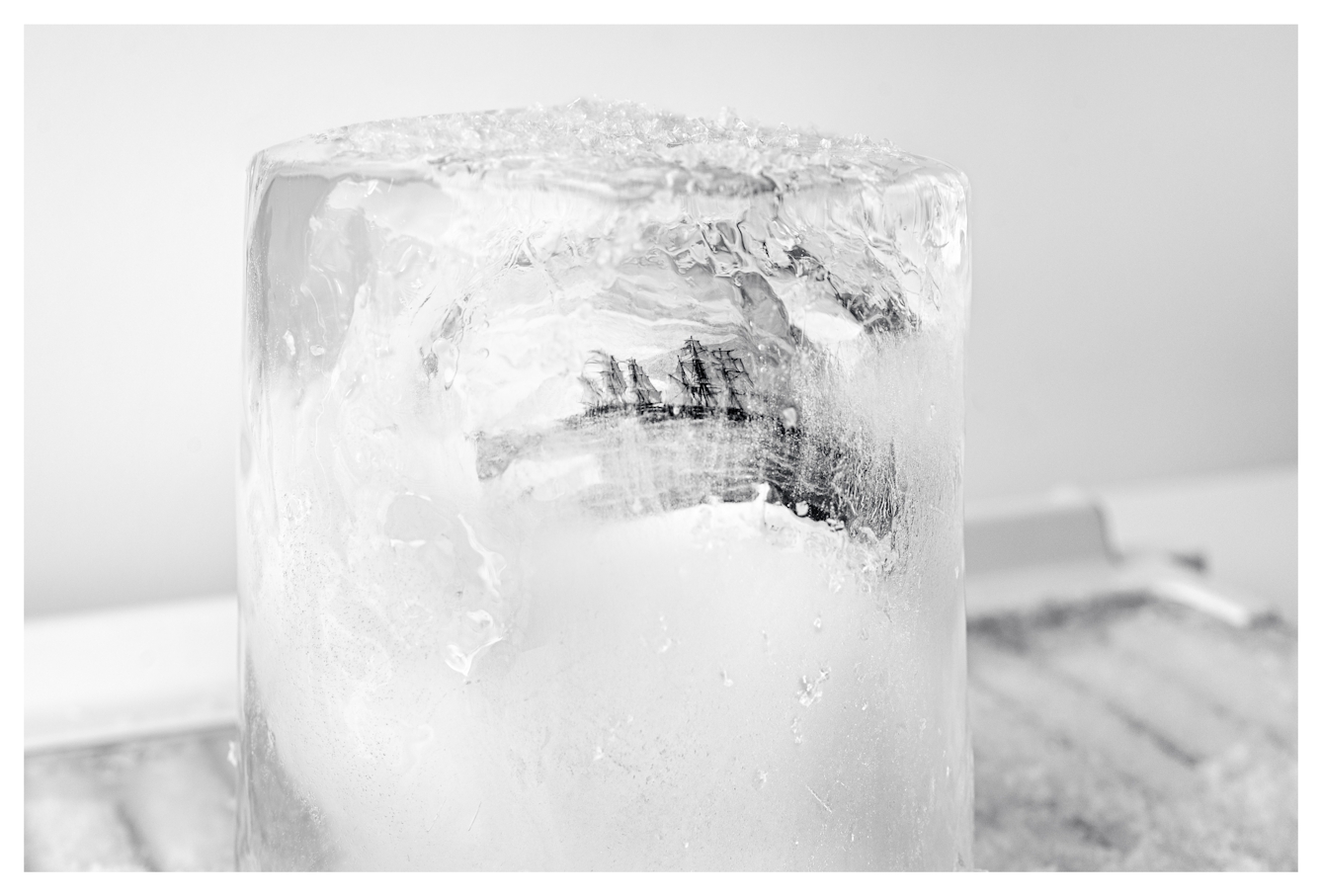
Ships approaching Mount Erebus, Antarctica, 1868.
One of the key pieces of information that bubbles of air like these can give us is how much carbon dioxide was in the atmosphere before people started systematically recording it in the 1950s.
Back in 1765, there would have been about 280 parts of carbon dioxide for every million parts of the atmosphere at large (ppm, parts per million). Even a hundred or so more carbon ppm can make a marked difference to global temperature, and we recently hit a new record of 420ppm, as readings rise two to three ppm a year.
Binitie’s project deliberately chose 1765. It’s the year James Watt had a eureka moment of sorts, walking across a park in Glasgow, which allowed him to greatly improve the steam engine and, with his business partner Matthew Boulton, sell fossil-fuel-based industry to the world. It’s hard to discern a precise date of birth for the climate crisis, but it’s as fair a marker as any.
Slices of frozen history
Ice-core research itself emerged in the 1960s. Danish meteorologist Willi Dansgaard had spent time in Greenland just after the Second World War and yearned to go back to collect and study the chemistry of polar ice.
When, in 1958, a friend offered the chance to hitch a ride on a fishing and sealing boat to the Arctic, he jumped at the chance. They built a makeshift lab on the foredeck, naming it Boblebua (“home of the bubbles”). The skipper crossed himself at what this lab might do to the boat.
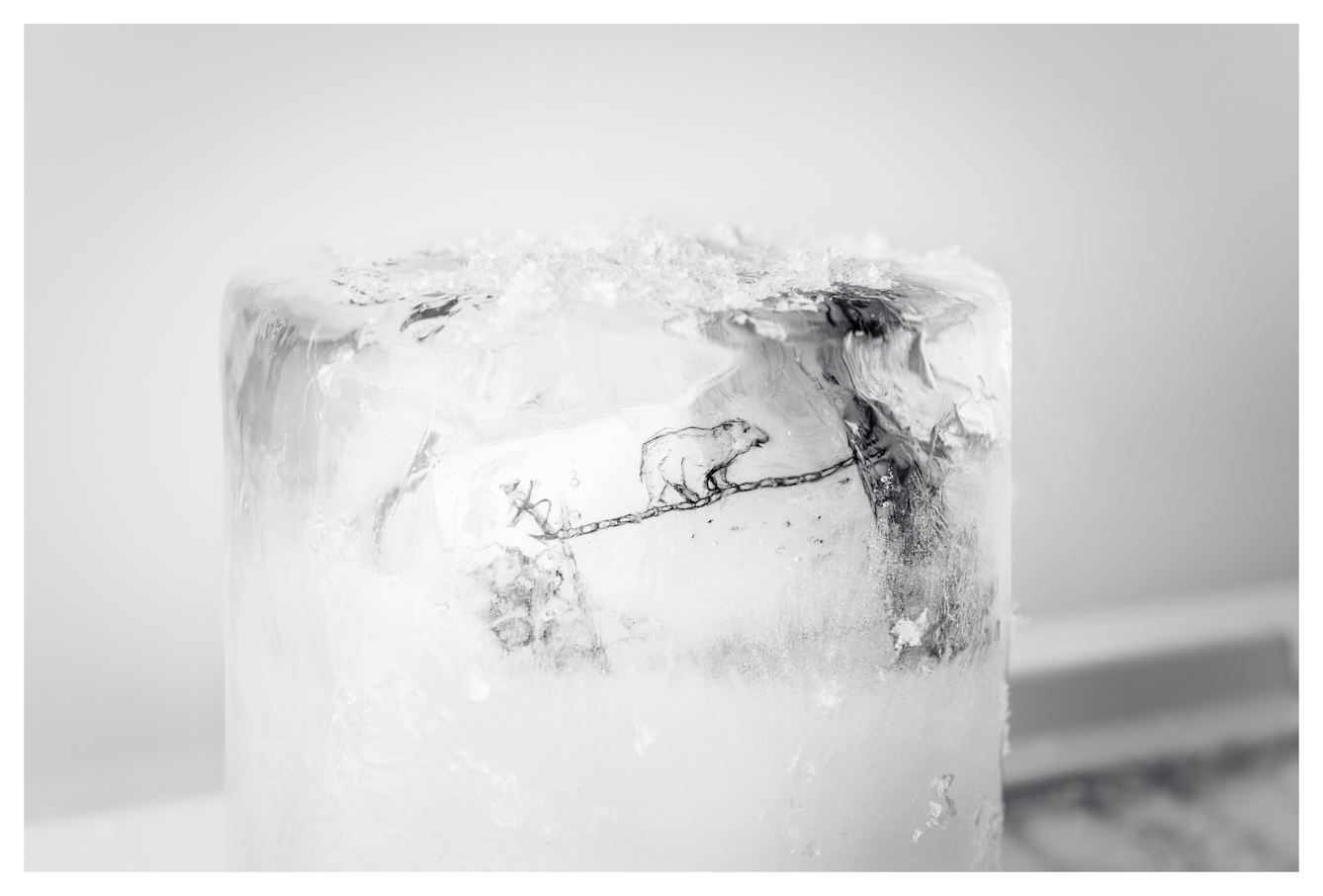
Pencil drawing of a polar bear with images of the Antarctic Sea, c.1844.
Ice was floating around them, but they didn’t want to just fish it out of the sea, as they didn’t know where it came from. Instead, they crept closer to the glaciers and waited for a decent-sized chunk to fall off, which they’d then chop up on deck and melt down, filling thousands of plastic bottles with samples to analyse back home. Sometimes they’d ram the boat into smaller icebergs, which proved reasonably efficient (as long as someone held on to the glassware).
In 1964, Dansgaard was able to take a second expedition, this time as a guest of the US Army, to a place called Camp Century. By this point, the Arctic was established as a key site for the study of a climate everyone agreed was changing – surprising glacier melt had been observed since the 1930s – but it was also politically significant as the possible site for a war with the Soviets. Science offered some cover for military work, and helped inform it.
Camp Century had been built in the late 1950s. A strictly isolated research centre, it housed up to 250 men in 32 buildings, powered by a nuclear reactor buried 300 feet below the living quarters. In his memoirs, Dansgaard describes it as fitted out like a modern town, with a radio station, shops, hospital, cinema, church and library. An especially obliging bartender in the mess charged just 25 cents a drink, no matter the size.
Willi Dansgaard knew that if only he could get access to some of this specially extracted ice, he’d be able to travel much further back in bubble-time
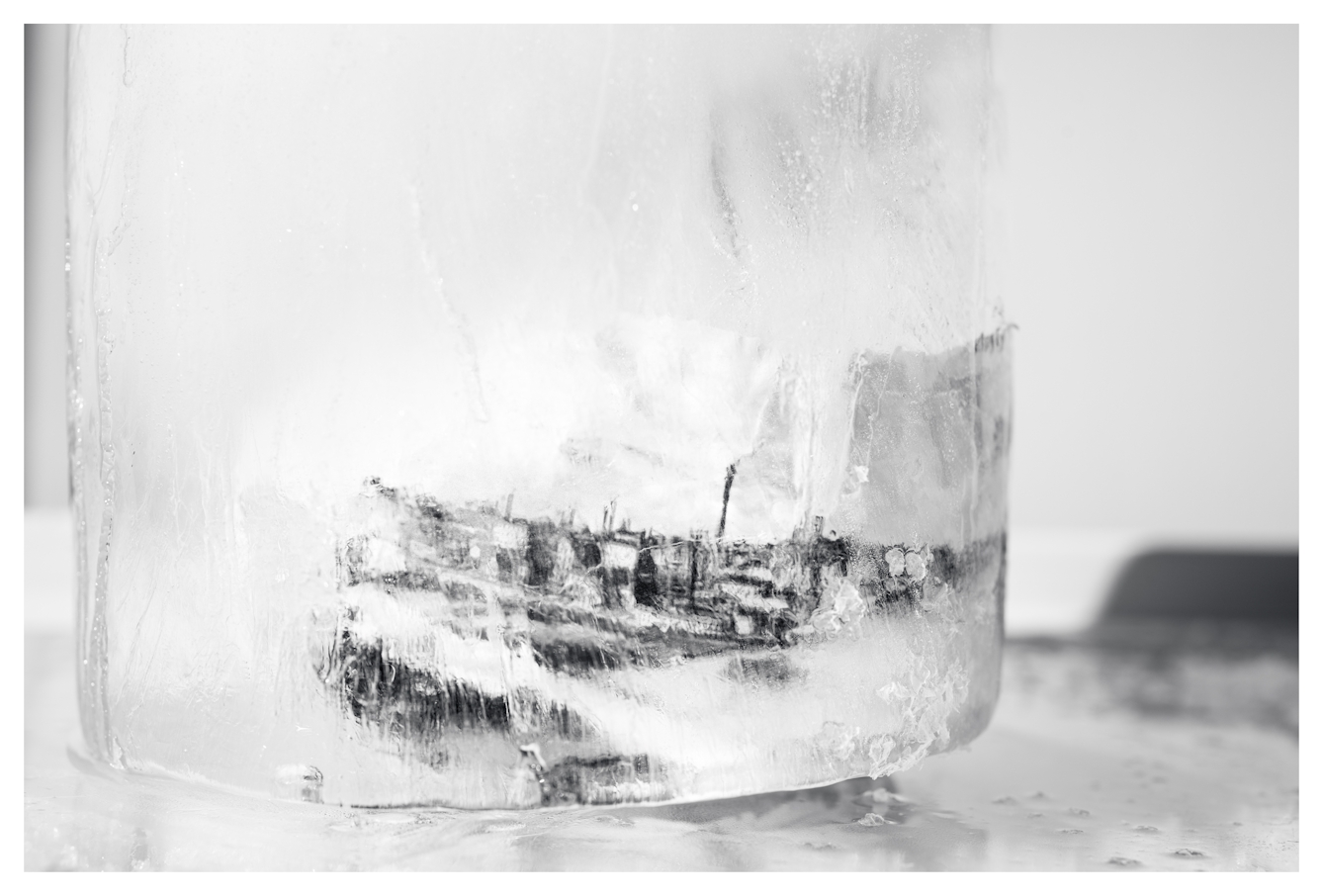
Commencing industrialism. A Lancashire town in the early 19th century.
Dansgaard wandered around the camp and caught wind of a new ice-drilling project being tested nearby. This used a special new piece of drilling kit that melted the ice while preserving the core it was extracting. Dansgaard knew that if only he could get access to some of this specially extracted ice, he’d be able to travel much further back in bubble-time than his experiments with Boblebua.
Eventually in 1967, under much secrecy and after a lot of cajoling of US colleagues, Dansgaard had cores to explore, taking him back 100,000 years, roughly 50 years a metre.
We have these ice cores to thank for the phrase “global warming”: in 1975, American geochemist Wallace Broecker used Dangaard’s ice-core studies in his seminal paper ‘Are we on the brink of pronounced global warming?’ (Broecker would later offer a $200 bounty to anyone who could find an earlier use of the term).
Scientists in a melting world
Today, one of the challenges for ice-core researchers is the same problem they study – the ice they want to study is melting away.
Dorothea Moser, PhD student at the British Antarctic Survey, researches cores of ice that have melted and refrozen. Valuable information can be lost in this melting, Moser tells me, and her work tries to riddle out what we can still learn from them.
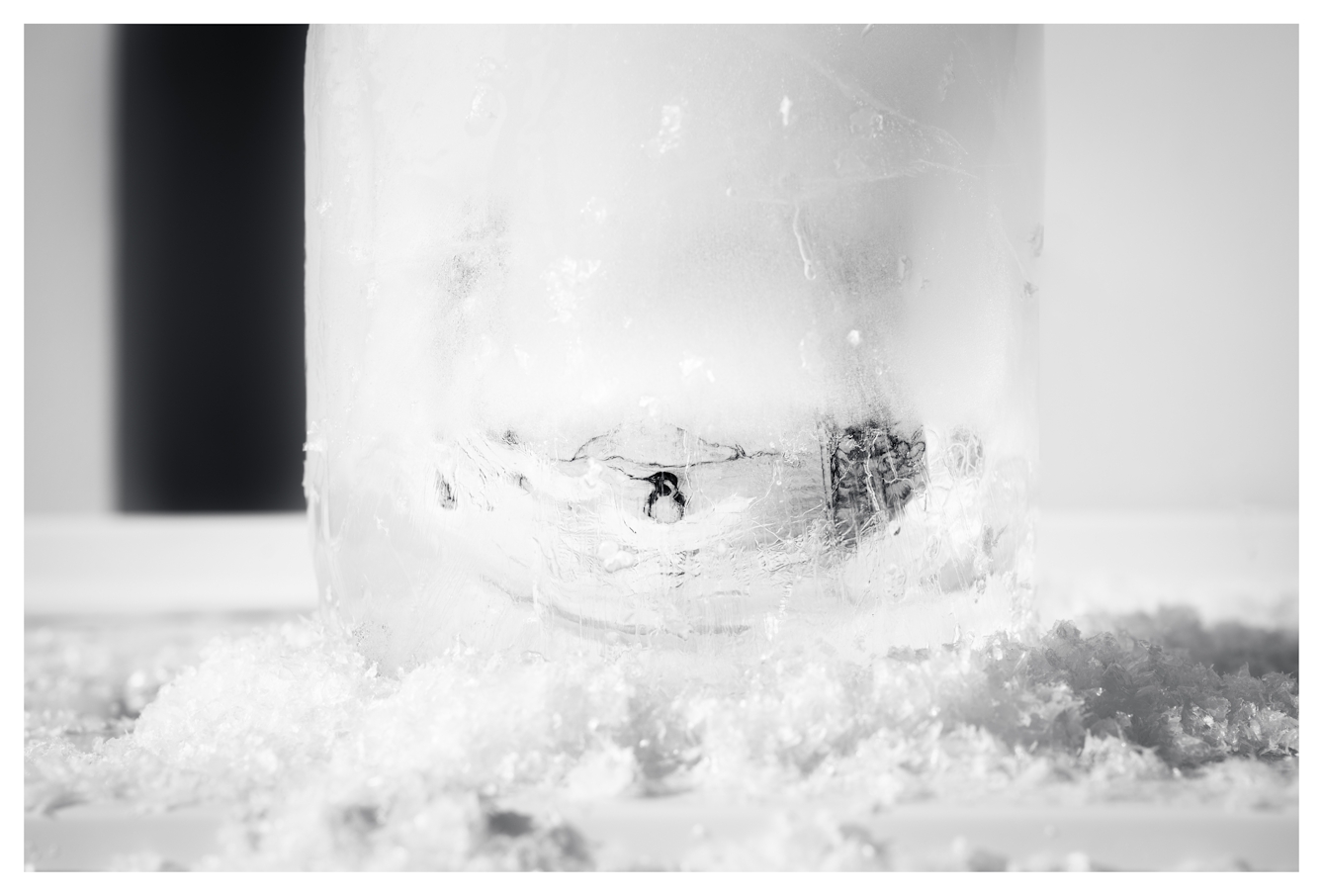
Pencil drawing of a penguin with images of the Antarctic Sea, c.1844.
Dust or black carbon can be reasonably stable, but types of algae that can be a useful indicator of seasonal change degrade with melting. When it comes to air, the melting densifies the ice, pushing out the bubbles and leaving tragically clear samples.
These melt-affected cores might not be the oldest ice being studied, but it’s some of the most important, sitting in regions especially sensitive to climate change, which could provide vital data, if only scientists can find it. We need data from these regions and their melt-affected ice, Moser says, “So we better understand what's going on there.”
Like many polar researchers, Moser feels a connection to the climate crisis strongly through her work, but it’s not simply a matter of getting depressed at signs of loss and melting. She’s clearly driven by a fascination with the beauty of Earth systems, and finds inspiration in her research, which “softens the pain of eco-anxiety”.
One of the things Moser loves about Earth science is bringing approaches together – “touch the elephant from various angles”, as she puts it. This integrated approach, appreciating the need for multiple perspectives, offers a way to think about tackling the climate crisis. “We cannot and we don't have to rescue the Earth on our own. There's a puzzle going on, and each one of us can be a piece of that.”
About the contributors
Alice Bell
Alice Bell is a climate campaigner and writer based in London. She is the author of ‘Can We Save the Planet?’ (Thames & Hudson, 2020) and ‘Our Biggest Experiment: a history of the climate crisis’ (Bloomsbury, 2021).
Kathleen Arundell
Kathleen is a freelance photographer working in the culture and heritage sector. She works in a range of museums across London, and loves all things science and art.

